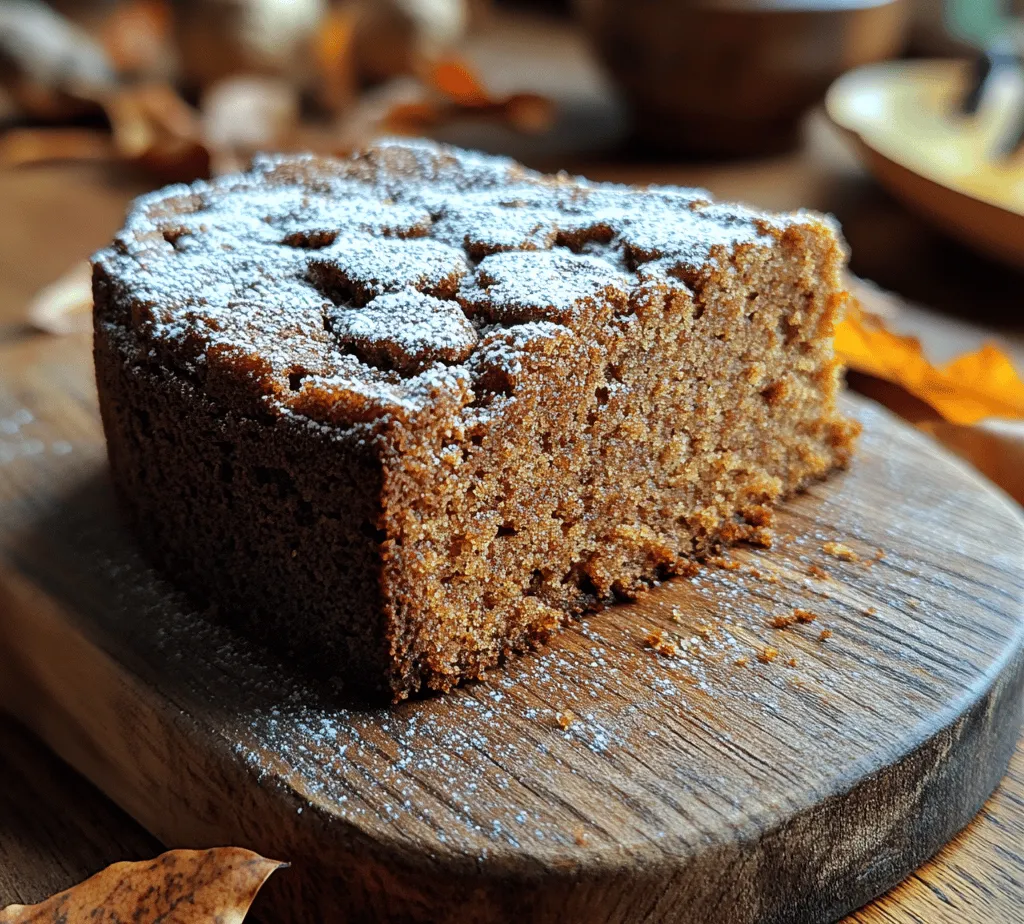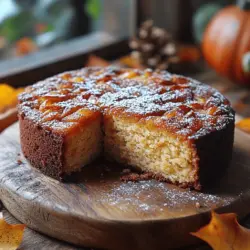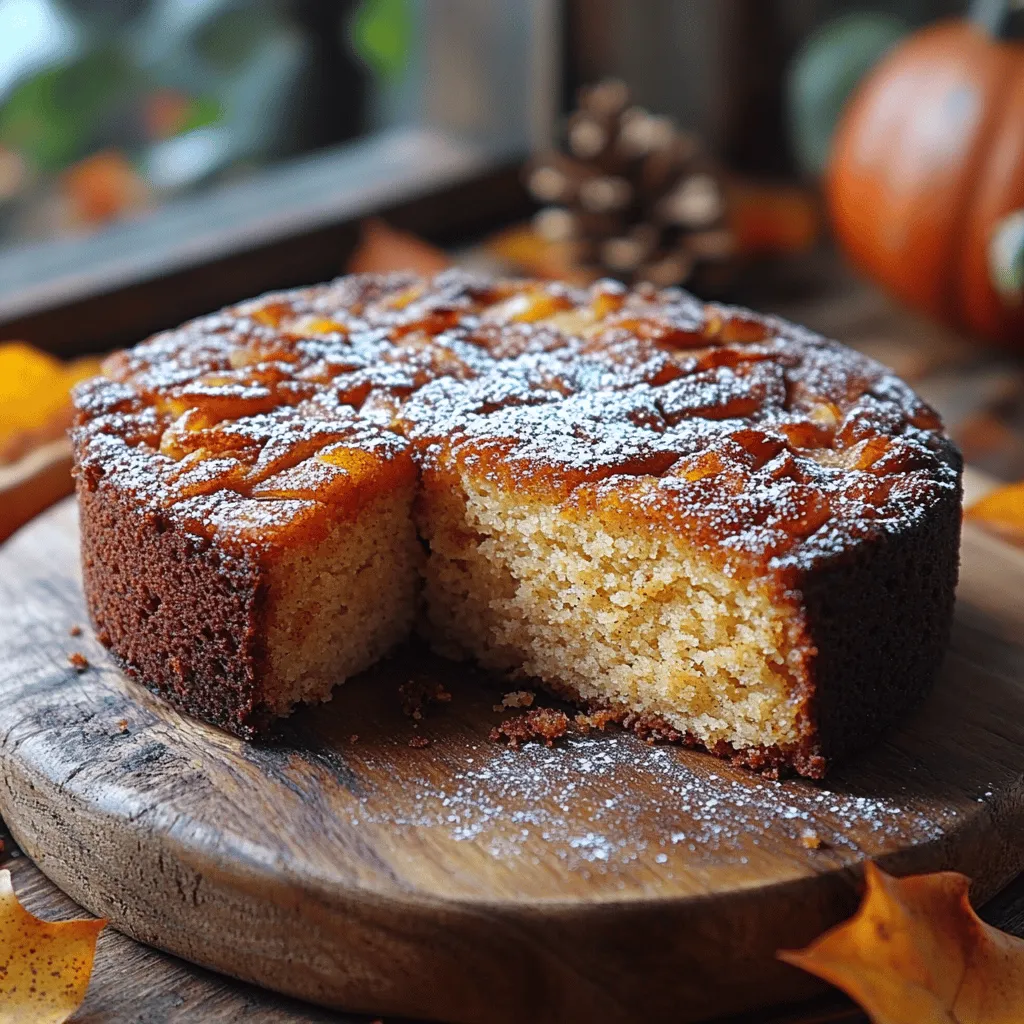Introduction
As the crisp air of autumn settles in and leaves begin to change, the allure of seasonal baking emerges, bringing with it the beloved gingerbread cake. This cake, with its deeply spiced flavor and moist texture, serves as a perfect centerpiece for fall gatherings, family dinners, and festive celebrations. Gingerbread has long been a comforting staple, evoking memories of cozy evenings spent with loved ones, and its warm, aromatic spices make it a favorite among seasonal desserts.
The significance of autumn spices in this recipe cannot be understated. Ginger, cinnamon, cloves, and nutmeg each bring their unique warmth and depth, creating a harmonious blend that embodies the essence of the season. These spices not only enhance the flavor profile of the cake but also contribute to its irresistible aroma, filling your home with a sense of comfort and nostalgia. As the days grow shorter and the temperatures drop, there’s something profoundly satisfying about indulging in homemade desserts that encapsulate the spirit of fall.
Moreover, the act of baking during this time of year invites us to slow down and savor the moment. Whether it’s Thanksgiving, Halloween, or simply a gathering of friends, a homemade gingerbread cake provides a nurturing touch that store-bought treats simply cannot match. It’s an opportunity to share warmth and joy, making it a cherished tradition for many families.
Understanding the Ingredients
To create a remarkable spiced autumn gingerbread cake, it’s essential to understand the role each ingredient plays in the baking process. Each component contributes not only to the cake’s flavor but also to its texture and overall success.
All-Purpose Flour
All-purpose flour serves as the backbone of this gingerbread cake, providing the structure and texture needed for a successful bake. It contains a moderate amount of protein, which forms gluten when mixed with liquids, helping the cake rise and hold its shape. For optimal results, ensure that your flour is properly measured—spoon it into the measuring cup and level it off with a knife to avoid packing it down, which can lead to a denser cake.
Baking Soda and Baking Powder
Leavening agents are crucial for achieving the desired rise and lightness in baked goods. In this recipe, both baking soda and baking powder are utilized. Baking soda is a base that reacts with the acidity of molasses, producing carbon dioxide bubbles that help the cake rise. Baking powder, which contains both an acid and a base, provides additional leavening, ensuring a fluffy texture. It’s important to check the expiration dates on these ingredients for maximum effectiveness.
Spices: The Warming Flavors
The spiced element of the gingerbread cake is what sets it apart. Ground ginger, cinnamon, cloves, and nutmeg bring a symphony of warming flavors that evoke the essence of autumn. Ginger adds a zesty kick, while cinnamon provides sweetness and warmth. Cloves offer a hint of earthiness, and nutmeg rounds the profile with its nutty depth. Together, these spices create a delightful blend that not only enhances the taste but also complements the other ingredients, making each bite a celebration of fall.
Brown Sugar vs. White Sugar
When it comes to sweetness, the distinction between brown sugar and white sugar is significant. Brown sugar, which retains some of the molasses content, adds moisture, richness, and a subtle caramel flavor to the cake. This contributes to the overall depth of flavor and helps maintain a moist crumb. On the other hand, white sugar can provide a cleaner sweetness but lacks the complexity that brown sugar offers. For this recipe, the combination of both is often preferred to achieve the perfect balance between flavor and texture.
Molasses
Molasses is a key ingredient in gingerbread cake, providing not only sweetness but also a deep, rich color and flavor. Its thick consistency adds moisture to the batter, which is essential for preventing a dry cake. Additionally, the natural sugars in molasses undergo caramelization during baking, enhancing the cake’s flavor profile and giving it that characteristic dark hue. Opting for unsulfured molasses is usually recommended, as it offers a cleaner taste without the harshness sometimes found in sulfured varieties.
Butter and Egg
Fat plays an important role in creating a tender crumb, and in this gingerbread cake, butter is the primary source. It adds richness and flavor, while also contributing to the cake’s moistness. When creamed with sugar, butter helps to incorporate air into the batter, aiding in leavening. The egg acts as a binding agent, providing structure and stability, while also enriching the flavor. Together, these two ingredients create a luxurious texture that is both satisfying and delightful.
Hot Water
Interestingly, hot water is included in this recipe to help activate the baking soda and dissolve the sugars and spices more effectively. The heat helps to create a smoother batter and ensures that the ingredients blend seamlessly. Additionally, adding hot water can also help to soften any lumps in the flour and sugar, leading to a more uniform texture in the finished cake.
The Importance of Seasonal Baking
Baking with seasonal ingredients is not only a culinary practice but also a way to connect with tradition and evoke feelings of nostalgia. Autumn flavors, in particular, have a unique ability to conjure up memories of family gatherings, harvest festivities, and the comfort of home. This is especially true for gingerbread, which holds a special place in many cultural traditions around the world.
In various regions, gingerbread is associated with holiday celebrations, from the elaborate gingerbread houses of Christmas to the spiced variations enjoyed during harvest festivals. The use of spices in gingerbread is steeped in history; these warming flavors were once considered valuable commodities and were often reserved for special occasions. Today, they remind us of the bounty of the season and the warmth of shared moments.
Furthermore, using seasonal ingredients has its benefits. Ingredients harvested at their peak not only yield better flavor but also support local farmers and promote sustainability. Incorporating ingredients like apples, pumpkins, and spices into our baking connects us with the rhythms of nature and the changing seasons. It fosters a sense of community and encourages us to embrace the beauty of autumn.
Step-by-Step Instructions for Spiced Autumn Gingerbread Cake
Now that we’ve set the stage for this delightful spiced autumn gingerbread cake, it’s time to get started on the baking process. Here’s a step-by-step guide to ensure your cake turns out perfectly.
Preheat the Oven
Before you begin mixing your ingredients, it’s essential to preheat your oven to 350°F (175°C). Proper temperature control is critical in baking, as it helps to create the ideal environment for the cake to rise evenly. An adequately preheated oven ensures that the cake bakes thoroughly without becoming dry or dense. While the oven is heating, you can prepare your baking pans and ingredients.
Mixing Dry Ingredients
To achieve a well-blended batter, start by gathering all of your dry ingredients. In a large mixing bowl, combine the all-purpose flour, baking soda, baking powder, and spices: ground ginger, cinnamon, cloves, and nutmeg. Whisk these ingredients together until they are evenly distributed. This step is crucial, as it ensures that the leavening agents are well incorporated and that the spices are evenly scattered throughout the cake.
Mixing the dry ingredients separately before incorporating them into the wet ingredients helps to prevent clumping and ensures an even rise. Once thoroughly combined, set this bowl aside while you prepare the wet ingredients, setting the stage for a deliciously spiced autumn gingerbread cake that will be the highlight of your fall celebrations.
As you continue with the recipe, you’ll find that each step builds upon the last, guiding you toward a warm, fragrant cake that embodies the spirit of the season. Stay tuned for the next part of this article, where we’ll dive deeper into the mixing of wet ingredients and the baking process to bring your gingerbread cake to life.

Creaming Butter and Sugar
The process of creaming butter and sugar is a crucial step that greatly impacts the texture of your Spiced Autumn Gingerbread Cake. By beating the two together until light and fluffy, you incorporate air into the mixture, which helps to leaven the cake as it bakes. This creates a tender crumb that is essential for a moist and airy cake. Start with room temperature butter, as it will cream more easily and evenly with sugar. Use a stand mixer or hand mixer on medium speed to mix the butter and sugar for about 3-5 minutes until the mixture is pale and fluffy. Make sure to scrape down the sides of the bowl occasionally to ensure even mixing.
Incorporating Egg and Molasses
Once your butter and sugar are perfectly creamed, it’s time to add in the eggs and molasses. This step is vital for achieving a smooth batter. Crack the eggs one at a time into a separate bowl to avoid any shell bits, then add them slowly to the creamed mixture while mixing on low speed. This gradual incorporation helps to prevent the mixture from curdling. After the eggs are fully combined, pour in the molasses. Be sure to use unsulfured molasses for a deep, rich flavor without any bitterness. Mix until just combined, ensuring that you do not overmix at this stage, as you want to maintain the lightness created during the creaming process.
Combining Wet and Dry Ingredients
With your wet ingredients prepared, it’s time to bring everything together. In a separate bowl, sift together your dry ingredients: flour, baking soda, baking powder, spices (like cinnamon, ginger, and nutmeg), and salt. Sifting not only removes lumps but also aerates the flour, contributing to a lighter cake. Gradually add the dry mixture to the wet ingredients, alternating with the buttermilk or milk. Start with the dry ingredients, followed by a portion of the milk, and repeat this process until everything is just combined. It’s important to mix gently and avoid overmixing at this stage, as this can lead to a dense cake. Aim for a batter that is smooth but still contains small lumps—this is perfectly normal.
Baking the Cake
Preheat your oven to 350°F (175°C) and prepare your cake pan by greasing it and lining the bottom with parchment paper for easy removal. Pour the batter into the prepared pan, smoothing the top with a spatula. Bake in the preheated oven for 30-40 minutes. To check for doneness, insert a toothpick into the center of the cake; it should come out clean or with a few moist crumbs clinging to it, but not wet batter. Once baked, allow the cake to cool in the pan for about 10 minutes before transferring it to a wire rack to cool completely. Cooling is vital; it allows the flavors to develop further and makes it easier to frost or slice the cake without it falling apart.
Serving Suggestions
When it comes to serving your Spiced Autumn Gingerbread Cake, there are countless delightful ways to present it. A simple dusting of powdered sugar can add a touch of elegance and sweetness without overpowering the cake’s rich flavors. Alternatively, consider slathering your cake with a luscious cream cheese frosting. To make the frosting, combine cream cheese, butter, powdered sugar, and a splash of vanilla until smooth and creamy. For an extra flavor twist, add a pinch of cinnamon or nutmeg to the frosting. Serve your cake with a dollop of whipped cream or alongside a scoop of vanilla ice cream for an indulgent treat.
Baking Tips for Success
To ensure your Spiced Autumn Gingerbread Cake turns out perfectly, consider these baking tips:
1. Ingredient Temperature: Make sure your butter and eggs are at room temperature before you start baking. This helps create a more uniform batter and improves the cake’s final texture.
2. Common Pitfalls: Avoid common mistakes such as overmixing the batter, which can result in a dense cake. Also, ensure you’re using the right baking powder and baking soda, as expired leavening agents can lead to a cake that doesn’t rise properly.
3. Measuring Ingredients: Accurate measurement is crucial in baking. For flour, spoon it into your measuring cup and level it off with a knife instead of scooping directly from the bag, which can pack it down and lead to too much flour.
Flavor Variations and Customizations
The beauty of the Spiced Autumn Gingerbread Cake is its versatility. To enhance its flavor profile, consider adding chopped nuts like walnuts or pecans into the batter for an added crunch. Dark chocolate chips can also complement the spices perfectly, providing a rich contrast to the cake’s sweetness. For those looking to experiment with frostings, a simple vanilla buttercream can be used instead of cream cheese frosting, or even a maple glaze for a seasonal twist.
If dietary needs are a concern, this gingerbread cake can easily be adapted. Substitute all-purpose flour with a gluten-free blend to cater to gluten sensitivities. For a dairy-free version, use coconut milk or almond milk in place of regular milk and opt for a dairy-free butter alternative.
Storing and Serving Suggestions
To store your leftover Spiced Autumn Gingerbread Cake, wrap it tightly in plastic wrap or aluminum foil and keep it at room temperature for up to three days. If you’d like to extend its shelf life, consider refrigerating it, where it will last up to a week. To enjoy your cake warm, reheat slices in the microwave for about 10-15 seconds, or warm it in the oven at 300°F (150°C) for about 5-10 minutes.
Pair this comforting cake with a warm cup of chai tea, spiced apple cider, or a rich dark roast coffee. If you’re hosting a gathering, serve it alongside a seasonal fruit tart or a scoop of pumpkin pie for a delightful dessert spread.
Conclusion
Baking and sharing a Spiced Autumn Gingerbread Cake brings joy not only to the baker but also to those who gather around to enjoy it. The aroma of warm spices filling your kitchen creates a sense of comfort and nostalgia that is often associated with family traditions and celebrations. As you experiment with this recipe, don’t hesitate to make it your own by trying different flavors or presentation styles.
Remember, baking is not just about following a recipe; it’s about creating memories and sharing them with loved ones. Embrace the comforting nature of seasonal baking, and let the Spiced Autumn Gingerbread Cake become a cherished part of your family’s traditions, bringing everyone together during the cozy autumn months.

